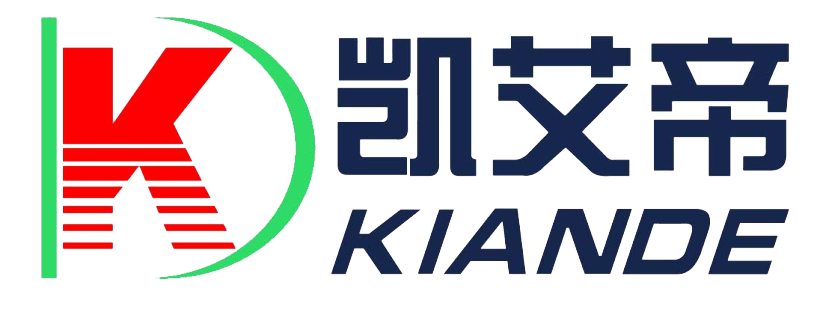
What are the bus accessories included?
Busbar accessories include plug-in box kits, plug-in interfaces, connectors, elbows, flange ends, cable entry boxes, busbar end seals, horizontal brackets, spring brackets, flexible connections, variable capacitance joints, three links (T connection), Elbows (horizontal and vertical), expansion joints, are not necessarily used in every project. It depends on the situation.
Low-voltage intensive bus ducts are composed of straight sections, elbows, tees, flanges, cable adapter boxes, terminal seals, and plug-in boxes. Connectors are generally included in the quotation of straight sections. Of course, some manufacturers are Quoted separately.
Straight section, elbow, tee, flange, cable transfer box, terminal seal, plug-in box connecting copper plate, insulating plate
Insulation threaded screws generally refer to spring brackets, busbar connectors, copper bars, and plug-in boxes.
The bracket is used to squeeze the buffer busbars when connecting. The connector is used for connection.
The connecting copper busbar is used for the connection between the box body of the cabinet and the bus bar.
The plug-in box is used for taking electricity according to the requirements on the drawing.
Busbar accessories can be divided into two categories: standard accessories and optional accessories
The busbar-scale accessories refer to the accessories that are equipped with the machine. Although the standard configuration of each model is different, the common standard configuration components are memory and paper feeding cassette. Of course, for different models, the size of the memory and the capacity of the paper tray are different. The standard configuration can be understood by consulting the product description. If there is a lack of standard configuration, it will affect the use and function of the product to a certain extent.
Optional accessories refer to components that can enhance product functions and improve product functions in addition to standard configuration. They need to be purchased separately. Unlike the standard configuration, not using optional accessories will not affect the use of the basic functions of the product. There are many types of optional accessories, and the optional products supported by different products are also different. Therefore, you should check the product description in advance when purchasing optional accessories, so as not to buy them and not use them.
Application of busbar accessories in different places
The spacing between the support points of the blocked busbar for horizontal laying should not be greater than 2.5m; for vertical laying, special accessories should be used to support the passage through the floor. Vertically laid blocked busbars should be fixed with brackets when the inlet box and the end are suspended in the air.
Expansion joints should be installed when the straight-line laying length of the blocked busbar exceeds 40m. When the busbar crosses the expansion joint or settlement joint of the building, the mechanical joint processing of the busbar accessories should adopt measures that adapt to the movement of the building structure. The plug-in branch point of the HIPS sheet-blocking bus should be located in an an quan that is reliable and easy to install and maintain. The connection of the blocked bus should not be set through the floor or wall. When passing through firewalls and fire-proof floor slabs, fire isolation measures should be taken. The lap surface between the bus bar and the bus bar, the bus bar and the electrical appliance wiring should be cleaned and coated with power compound grease.
The assembly process of busbar accessories is as follows:
1. Basis and scope of application
This process is suitable for the assembly and production of finished bus ducts.
2. Equipment and tools
Wire cutters, crimping pliers, needle-nose pliers, wrenches, electrician's knife, Phillips screwdriver, copper row machine, hand electric drill, air gun, riveting gun, pressing equipment, etc.
3. The pre-assembly process of the bus duct
(1) Use an air gun and a rag to clean the busbar shell and busbar conductors, and there must be no burrs, metal particles and dust in any form.
(2) Before assembling the busbar, carefully check whether the insulation layer of the busbar is damaged, whether the insulation layer wraps up to meet the design requirements, and the shell close to the busbar should be free of any form of burr.
4. Precautions for busway assembly
(1) The lifting height of the oil cylinder is even and reasonable.
(2) Start the pressing equipment, and start the number of oil cylinders according to the length of the mother groove.
(3) According to the size of the busway, choose a suitable lower pressing block and place it on the oil cylinder platform. The pressing block is required to be in a straight line to facilitate the placement of the side plate.
(4) Try to place lower pressure blocks on both ends of the side plate.
(5) For three-phase five-wire busbars, when placing the busbars, pay attention to the N line and the PE line adjacent to each other.
(6) After placing the lower side board, lightly place the assembled busbar on the lower side board. The busbar at the joint is required to exceed the end face of the side board by 95mm, and the busbar is equally divided on the side board.
(7) After checking that the busbars are placed properly, put the upper side board, the upper side board should be aligned with the lower side board front, back, left, and right.
(8) After placing the upper side plate, reasonably select and allocate the upper pressure block in the upper side plate slot.
(9) Raise the oil cylinder corresponding to the busway to make the busbar and the shell slightly compressed first, and observe whether the busbar and shell are out of position. If it is unreasonable, it needs to be adjusted properly.
(10) Choose the appropriate pressure to make the busbar and the shell side plate match naturally and tightly, the pressure is uniform, and the busbar must not be loose.
(11) When assembling the cover plate, it should be aligned with the end of the side plate. The cover plate is 103mm equally divided between the upper and lower side plates. It is never allowed to drill and pull the rivets at will.
(12) The outsourcing polyester film is at least 15mm beyond the side panel. If it does not meet the requirements, it must be returned to the previous process for rework.
(13) For bus ducts with pins, it should be noted that the heights of the pins are the same, the height and distance of the corresponding pins meet the requirements of the drawings, and the direction of the shell with the grounding pins matches the busbar pins.
(14) The cover plate with 4mm side needs to be ground 40mm in order to assemble the connecting side plate, smooth and remove burrs.
(15) For bus ducts with pins, the distance between the A and B phase pins and the edge of the cover opening should be the same, and the center should be in the cover socket hole.
(16) The insulating layer on the opposite side of the pin and the side plate is required to be pressed tightly under the cover plate without arching, so that the socket can be placed.
(17) The junction of the busbar with the middle partition plate and the cover plate extending from the inlet section also needs to be smoothed with a 4mm edge, which requires a beautiful grinding work.
(18) The busbar sealing strip is installed correctly, and the protection level meets the design requirements.
(19) The iron filings and aluminum filings punched in the installation process are strictly prohibited to enter the busbar shell.
(20) For bus ducts with sockets, please note that the direction of the cover plate is reversed, and whether the distance between the hoop mounting hole and socket is consistent with the drawing.
(21) If there is no welded cover plate, it should be connected tightly during assembly.
(22) For double-row bus ducts, first fix the two lower side plates and the middle partition with screws, and then place the bus bars and the upper side plates on the machine to press and rivete.
(23) After riveting the rivet, it is necessary to observe whether the cover plate and the side plate have been riveted. If it is not riveted, it must be riveted again.
(24) The bus ducts assembled by the bus assembly line should be placed neatly.
Want to know more about the product
Suzhou Kiande Electric Co.,Ltd.
Tel:+86 512 62994177
Phone:+86 18115561910
Fax:+86 512 62764177
E-mail:cy@busabrequipment.com
Skype:yi_tina1
WhatsApp:+8615962150889
Add:No. 123 Suzhou Dadao East Road, SIP, Suzhou City, Jiangsu Province, China




